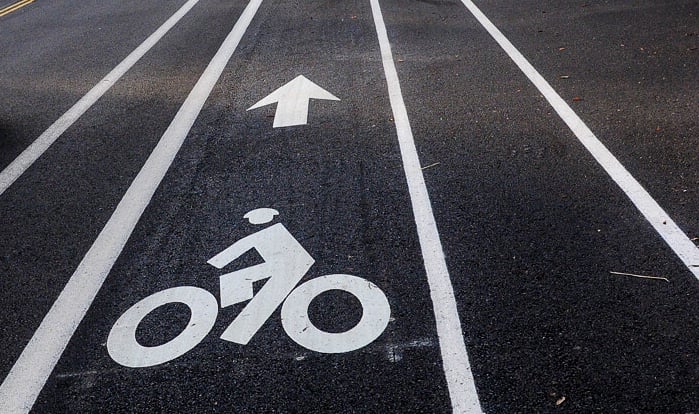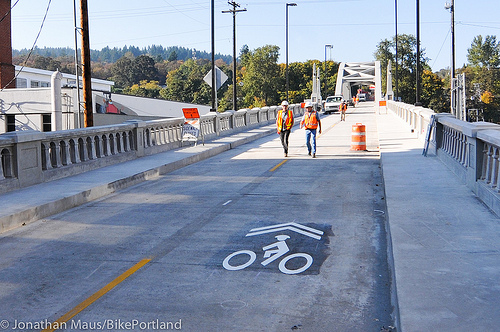Year: 2006
Brand: K2 t-nine
Model: Breeze
Color:Teal
Size:xs
Stolen in Portland, OR, OR 97236
Stolen:2012-10-11
Stolen From: Home on 140th behind powell butte
Neighborhood: Powell Butte
Owner: Eron Riddle
OwnerEmail: eronriddle@gmail.com
Reward: 100
Description: Teal xs. green bike bell, axion rear rack with natural wood top, custom bars.
Police record with: Portland PD
Police reference#: T12008651
This registrant has documented proof of ownership of this bike
star-grey mercier kilo w-15 2009
Year: 2009
Brand: mercier
Model: kilo w-15
Color:star-grey
Size:46 c.m.
Serial: u91200888
Stolen in Portland, OR 97214
Stolen:2012-10-6
Stolen From: stolen from our apartment basement room. It’s a communal designated bicycle space. i locked it to a medal pole and someone took the time to unscrew the handle bars and slip it out of my u-lock. :/ i found one ring wash on the ground that whom stole my bike left it behind. (i wish i had a finger print kit) this building is off STARK SE st/37th. it’s directly across from Laurelhurst Park.
Neighborhood: stark and laurelhusrt park area
Owner: michelle russell
OwnerEmail: michellerussell1976@yahoo.com
Reward: yes
Description: (206)683-7572 metallic grey/black color with original components. except for the stem cap i replaced it with a crane creek (black) one. (lizard logo) black neylon handle bar grip tape with vague red stitching.
This registrant has documented proof of ownership of this bike
Gold Kona OB Frame 2000
Year: 2000
Brand: Kona
Model: OB Frame
Color:Gold
Size:M
Stolen in , OR
Stolen:2012-10-11
Stolen From: My home on the back side of powell butte. 140th between foster and powell
Neighborhood: Powell Butte
Owner: Eron Riddle
OwnerEmail: eronriddle@gmail.com
Reward: 200
Description: Gold early 00’s ob frame, new marzooci corsa with rlo, kenda DH tires. “Creature Decals” Race face stem, tan kona lock on grips
Police record with: Portland PD
Police reference#: T12008651
This registrant has documented proof of ownership of this bike
Metro votes against maintaining 75/25 funding split for Active Transportation
“… In a deep recession, people who are struggling — in addition to buses and bike paths — also need access to a job.”
— Ann Lininger, Clackamas County Commissioner
A 17-member Metro committee made up of mayors, commissioners, and transportation agency leaders around the region voted this morning to do away with a 75/25 federal funding allocation split that was hailed by active transportation advocates when it was established in 2010. At their meeting, Metro’s Joint Policy Advisory Committee on Transportation (JPACT) voted instead to adopt a new policy direction that will have projects of all types — including massive highway expansion projects — competing against each other.
At issue is how best to dole out an additional $38 million ($37.78 to be exact) that is unspoken for out of a $147 million pot of federal grant funds administered through the federal Metropolitan Transportation Improvement Program (MTIP) for the years 2016-18. (Note: Of this $147 million, JPACT has already decided to allocate: $48 million to transit bond payments, $26 million to Metro planning and regional programs, $26 million to “Active Transportation and Complete Streets” projects and $8.7 million to “Green Economy and Freight” projects).
flat black Trek Soho-S 2010
Year: 2010
Brand: Trek
Model: Soho-S
Color:flat black
Size:51cm
Photo: http://imageshack.us/a/img16/4139/bikec.png
Stolen in Portland, OR 97214
Stolen:2012-10-11
Stolen From: 27th and SE Madison.
Neighborhood: Hawthorne
Owner: Elliot Hunker
OwnerEmail: eshunker@gmail.com
Reward: YES!
Description: 2010 flat black Trek Soho-S; wooden/flat black hardwared PDW rear-rack; flat Richey handlebars with cork/wood-grain grips; Bontrager seat, stem, wheels, cranks; clear/opaque plastic BMX style pedals.
Police record with: Portland PD
Police reference#: 12-156375
This registrant has documented proof of ownership of this bike
Job: Bike Valet Attendant – Go By Bike
Sorry. This position has been filled.
Job Title
Bike Valet Attendant
Company/Organization
Go By Bike
Job Description
We are looking for a morning bike valet attendant to join our team. We provide a free bike valet service to the public at the lower aerial tram in South Waterfront. People drop their bikes off throughout the day and we securely park and watch over them. We also loan bikes out and provide bicycle repair service.
The morning bike valet attendant is responsible for opening the shop up on time, and parking bikes during the morning commute. A second attendant joins them to help park between 100-180 bikes by mid-morning.
A competitive applicant will have some experience and appreciation for riding bikes, a history of being punctual and reliable, and enjoy early mornings. The hours for this position are 6am-10am mon-friday. The starting compensation is $10 a hour.
How to Apply
Email gobybikeshop@gmail.com with a resume and a brief description of why you would enjoy and be good at this job. You can also drop a resume off at our shop.
First look: Sharrows installed on historic Oregon City/West Linn Arch Bridge
White Cannondale SR500 Criterium 1988
Year: 1988
Brand: Cannondale
Model: SR500 Criterium
Color:White
Photo: http://www.facebook.com/photo.php?fbid=10101061775191018&set=a.10101060253909678.2711914.21704603&type=1&relevant_count=1
Stolen in Portland, OR 97227
Stolen:2012-10-9
Stolen From: It was locked to the bike post in from of ZoomCare on the corner of Mississippi and Failing.
Neighborhood: Boise
Owner: Stephanie Lynch
OwnerEmail: stephaniemarie714@gmail.com
Reward: $100
Description: White frame with electric blue lettering, several dings in the paint. There is a Michigan drivers license number etched into the underside of the frame. Shimano parts. Drop bars with tattered black grip tape, T-Rex bell on the left, headlight mount on the right.
Police record with: Portland PD
Police reference#: 12-156350
This registrant does not have proof of ownership of this bike
blue Custom GT
Brand: Custom GT
Color:blue
Size:60″
Stolen in Portland, OR 97220
Stolen:2012-10-10
Stolen From: the down-town max stop near 1st and Ankeny.
Owner: Micky Damron
OwnerEmail: spacemanspiffff@gmail.com
Reward: 20
Description: there is a U-lock on the frame. the front wheel is worn our, the peddles are a hybrid for cleats and regular shoes, there is one red GT sticker on the middle frame. Email me if you have any info on this bike.
This registrant has documented proof of ownership of this bike
BLUE TREK 7.6 FX WSD 2010
Year: 2010
Brand: TREK
Model: 7.6 FX WSD
Color:BLUE
Size:17
Serial: WTU041G0523E
Photo: http://imageshack.us/a/img87/1111/mybike2c.jpg
Stolen in PORTLAND, OR
Stolen:2012-10-7
Stolen From: HAWTHORNE / BELMONT
Owner: Janice Pestana
OwnerEmail: janicepestana@ymail.com
Description: TREK 7.6 FX WSF- WITH RACK AND FENDERS
Police record with: PORTLAND
Police reference#: T12008631.
This registrant has documented proof of ownership of this bike
Red with yellow writing Torelli 2000
Year: 2000
Brand: Torelli
Color:Red with yellow writing
Size:49 (ish) cm
Photo: /home/sbr/public_html/temp/2012/16586.jpg
Stolen in Portland, OR 97211-4573
Stolen:2012-10-08
Stolen From: In front of my house (6603 N Curtis Ave Portland, OR 97211) – was ulocked to a car rack – took the entire rack
Neighborhood: Arbor Lodge
Owner: Jessi Mons
OwnerEmail: jessmo86@gmail.com
Reward: $100.00
Description: Red Torelli Frame – Campognolo Veloce components. Triple chain ring, Easton CT2 Carbon Fiber Seatpost and Selle Italia LDY Seat. Dirty Yellow handlebar tape, rear fender, small cages.
Police record with: Portland Police
Police reference#: 12-156356
State finds Disco Trike owner Dan Kaufman “not guilty”

(Photo © J. Maus/BikePortland)
The State of Oregon has issued a judgment of “not guilty” in the trial of the “Disco Trike” and its owner, local activist and filmmaker Dan Kaufman. The trial was heard by Multnomah County District Court Judge Cheryl Albrecht last Friday and she announced her decision today (PDF).
The Portland Police Bureau arrested Kaufman and seized his video equipment and his adult tricycle on SW Main Street near the Elk statue on the evening January 25th, 2012. Kaufman was participating in the J25 Occupy protests to commemorate the one-year anniversary of the Egyptian uprisings in Tahrir Square. According to court documents, Kaufman was in custody for 40 minutes and his personal property was impounded (it was released to him one month later). Ultimately, he received a violation for Unlawful Operation of Sound Producing Equipment. The police testified in court last Friday that the amplified music being played from his Disco Trike was agitating the crowd and that it could be heard beyond the legal distance of 100 feet.





